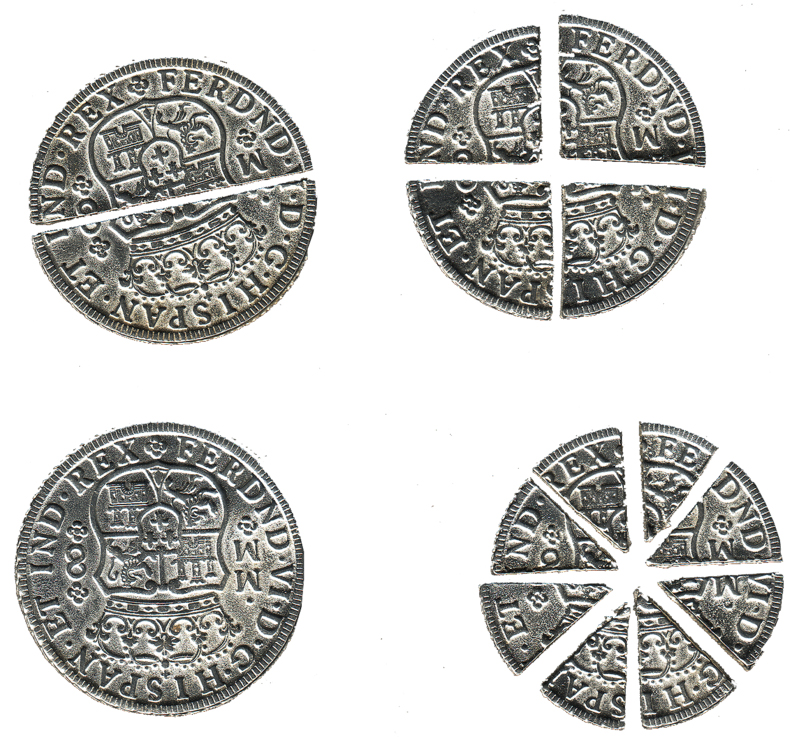Borrowed in part from “Sea History 149, Winter 2014-15”
Colonists in British North America were not allowed to mint money of their own, even though they often ran out of English coins to use in day-to-day business. Instead, they resorted to using whatever coinage they could get t heir hands on. The most common coin used during this time was the Spanish silver dollar, worth eight “Reales,” a unit of currency in Spain.
Back then, coins were valued by their actual weight in gold or silver, not just on what they looked like. Spanish coins were preferred over other currency because they had a milled, or patterned edge, which prevented dishonest traders from shaving slivers off of the coins without being detected.
Unlike today, cutting money was not illegal. In fact, it was expected that to make change people literally cut the coins into eight pieces, or “bits.” Hence, the British called the Spanish dollar a “Piece of Eight” (a coin worth eight pieces, or bits), and something valued at “two bits” cost a quarter of a dollar.
Americans used foreign money until 1857 when the United States government passed a law forbidding it.
